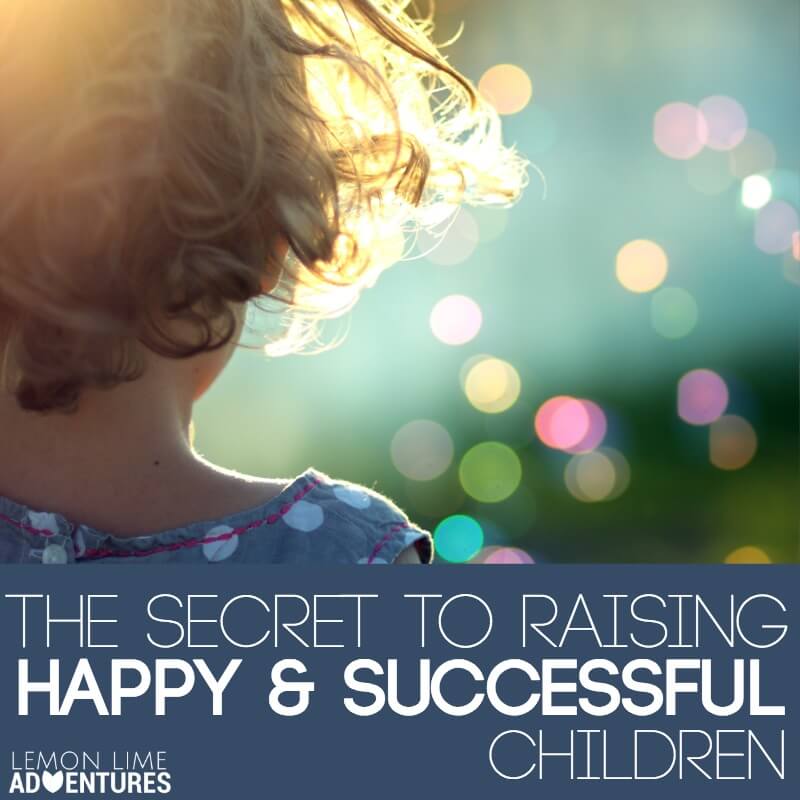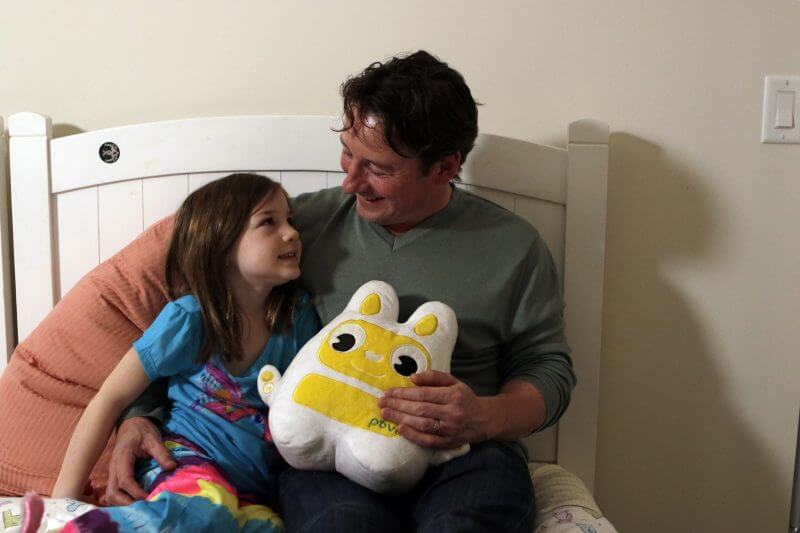Somedays I feel like my whole family is hanging on by a thread, just one wrong move and everyone is going to fall apart into tantrums and meltdowns. Who knows, maybe it will be a spilled ice cream or someone won’t want to play Lego with someone else, or maybe someone will say something that will hurt someone else’s feelings. So many opportunities for things to go wrong. Then I take a step back, take a deep breath and remember the secret to raising happy and successful children doesn’t have to feel like rocket science. Today, I’ve partnered with Povi, an innovative new EQ (emotional quotient) content platform + app with content sourced from experts and a huggable storytelling buddy, to bring you simple tips for raising successful children.

I am a Povi Blogger Ambassador. This post is part of a sponsored campaign. I received compensation for my participation, but my review and opinions are my own.
Teaching the ABC’s alone is simply not enough for raising happy and successful children. In fact, research highlights the importance of focusing on emotional intelligence starting at a very young age. By now, you might have heard the term “emotional intelligence” used in relation to children but due to your busy schedule or lack of time, might feel overwhelmed with how to foster this key to success in your children.
Emotional intelligence is comprised of two basic parts:
- The ability to recognize and manage your own emotions
- The ability to recognize, understand, and respond to other people’s emotions
It helps us communicate with others, problem solve and negotiate situations we are put in that require us to interpret emotions and reactions.
While some children are instinctively more inclined to recognize emotions and respond appropriately, many children require dedicated and intentional teaching of these skills. Children experience a variety of emotions from day to day, and sorting through these emotions can be draining for any child, especially children with sensory needs or anxiety.
According to Daniel Goleman, an American psychologist who helped to popularize Emotional Intelligence, there are five main elements of emotional intelligence:
- Self-awareness
- Self-regulation
- Motivation
- Empathy
- Social skills
You can see how each of these are instrumental in helping your child navigate through daily life.
In the end, the real value in understanding emotions, reading other’s facial expressions, and identifying feelings of your own is being able to make appropriate decisions based on your interpretations. As we discussed already, emotional regulation is about learning what triggers these big emotions and making a decision to change your course of action to affect your moods or the moods of those around you.
The reason emotional intelligence is so crucial for our children, is that they require these skills more than anyone. They are often times battling thought monsters and the effects of fight, flight or freeze, making it extremely difficult to regulate their emotions. By teaching children the names of their emotions, and how to interpret other’s emotions and feelings, we are giving them power and language to discuss their needs with us.
If your child is anything like mine, they struggle to appropriately gauge how others are feeling and more often misinterpret how they are feeling, therefore he reacts in an inappropriate manner or begins to spiral into fight, flight or freeze. So, what can we do to help them?

Teaching emotional intelligence is not something that is done overnight, however we can get started with some very simple activities.
5 Simple Ways to Boost Your Child’s Emotional Intelligence
Help Your Child Recognize their Own Emotions | It is important to begin with your anxious child. As I mentioned before, your child might not even realize when they are having different emotions. They might only know mad and happy, or happy and sad. These are two huge extremes and children are so quick to overlook the small changes in their moods and how this affects their bodies and their thoughts.
Talk About Your Own Emotions | Just as you have been doing for much of this course, you are going to want to play along with the emotions education. By telling your child that you are nervous about a big meeting at work or how you are excited to see your big sister at the family dinner, you are modeling that everyone has emotions, even you.
In addition, you are setting the stage for your child to see your emotions and regulation as a model. When you get frustrated and are able to share that frustration and problem solving with your child, you remove the situation from being about them and allow them to see emotional regulation in practice.
Get the Whole House Involved | Once you have focused on your child and yourself, you can begin to involve the whole family. This can be done with simple emotion check ins and with family meetings. It important to show that everyone has emotions and not everyone is either happy or sad, but has a range of emotions and that these are okay to have and express.
Recognize the Mood and Emotion In Public | Next, you can move away from focusing on your emotions and those in your family and start to draw your child’s attention to the moods and emotions you are seeing in your situations. For example, if you are in a store and see a child crying because they aren’t able to get a toy they want, you can point it out to your child and say something like “Wow, I see that little girl is having such a hard time. How do you think she is feeling? What do you think her mom might do to make her feel better? What would you do if you were the little girl?”
Make Learning About Emotions and Empathy Fun | Finally, teaching emotional intelligence can be fun. You can foster this through games, activities and explorations together as a family. In a digital age when children are often hyper digital and parents are busy with work, connecting with children can seem like an impossible task. We find ourselves searching for ways to have deeper conversations with our children and initiate play. Povi is not designed to be played with alone, but rather always with a parent on hand to discuss the challenges presented and come up with possible solutions with their child.
Povi comes with 10 pre-downloaded stories and a free app (available for Android or iOS) featuring additional questions parents can ask related to the stories and 20 additional stories that are age appropriate for each individual child. Parents can choose from among three levels, for ages 3-4, 5-6 and 7-8. The stories are written and curated by experts including psychologists, teachers and parents.

I am incredibly excited about Povi’s launch on Kickstarter! This is a campaign I am extremely happy to support and back. Povi is a connected toy with a mission, for children ages 3-8 and shares short stories based on children’s everyday situations then engages young listeners and their parents in a discussion on emotions and feelings. Povi’s stories address subjects such as caring, resilience, confidence, motivation, thankfulness and other valuable life skills.
 The first 2,000 customers to sign up will receive Povi at the discounted price of $49, a 40% discount from the future off-the-shelf Povi price. For more information about Povi visit www.povi.me.
The first 2,000 customers to sign up will receive Povi at the discounted price of $49, a 40% discount from the future off-the-shelf Povi price. For more information about Povi visit www.povi.me.
I am honored to be an early adaptor of the Povi and can’t wait to get one of the first releases of the plush storytelling buddy. Will you be joining me and boosting your child’s emotional intelligence with me?
I am a Povi Blogger Ambassador. This post is part of a sponsored campaign. I received compensation for my participation, but my review and opinions are my own.
Download our free poster set on how to get your kids to listen and follow directions.
These posters give you tips on how to get your kids to do what you ask, without refusing, running away, or ignoring you!








The Povi sounds like it’s a valuable teaching tool! I love this post. My entire parenting style is based around emotional intelligence. Teaching my children to recognize how their actions are based on their emotions and also affect the emotions of those around them is a priority for me.
Pingback: 100 Calm Down Tools and Strategies You Can Use Today